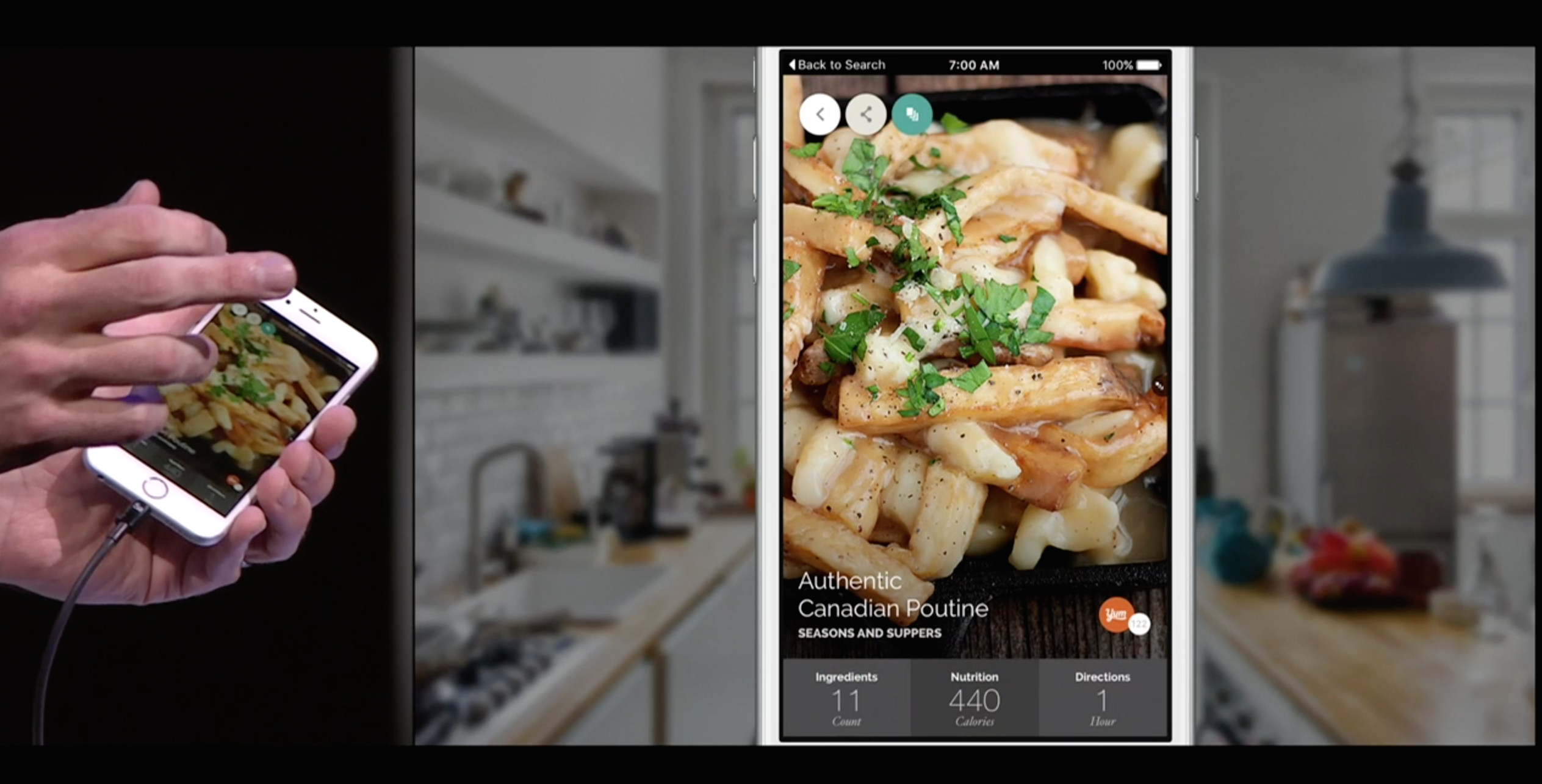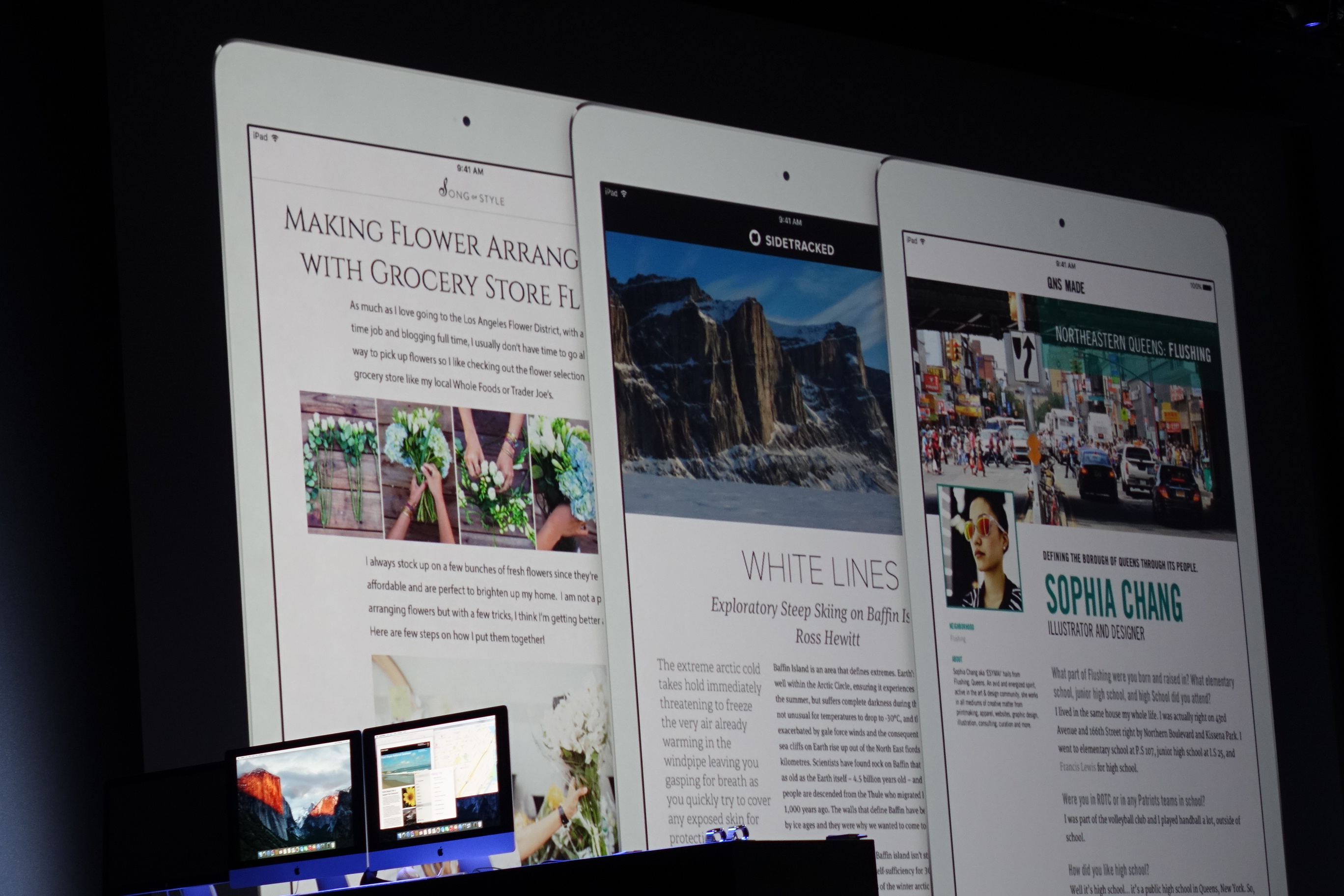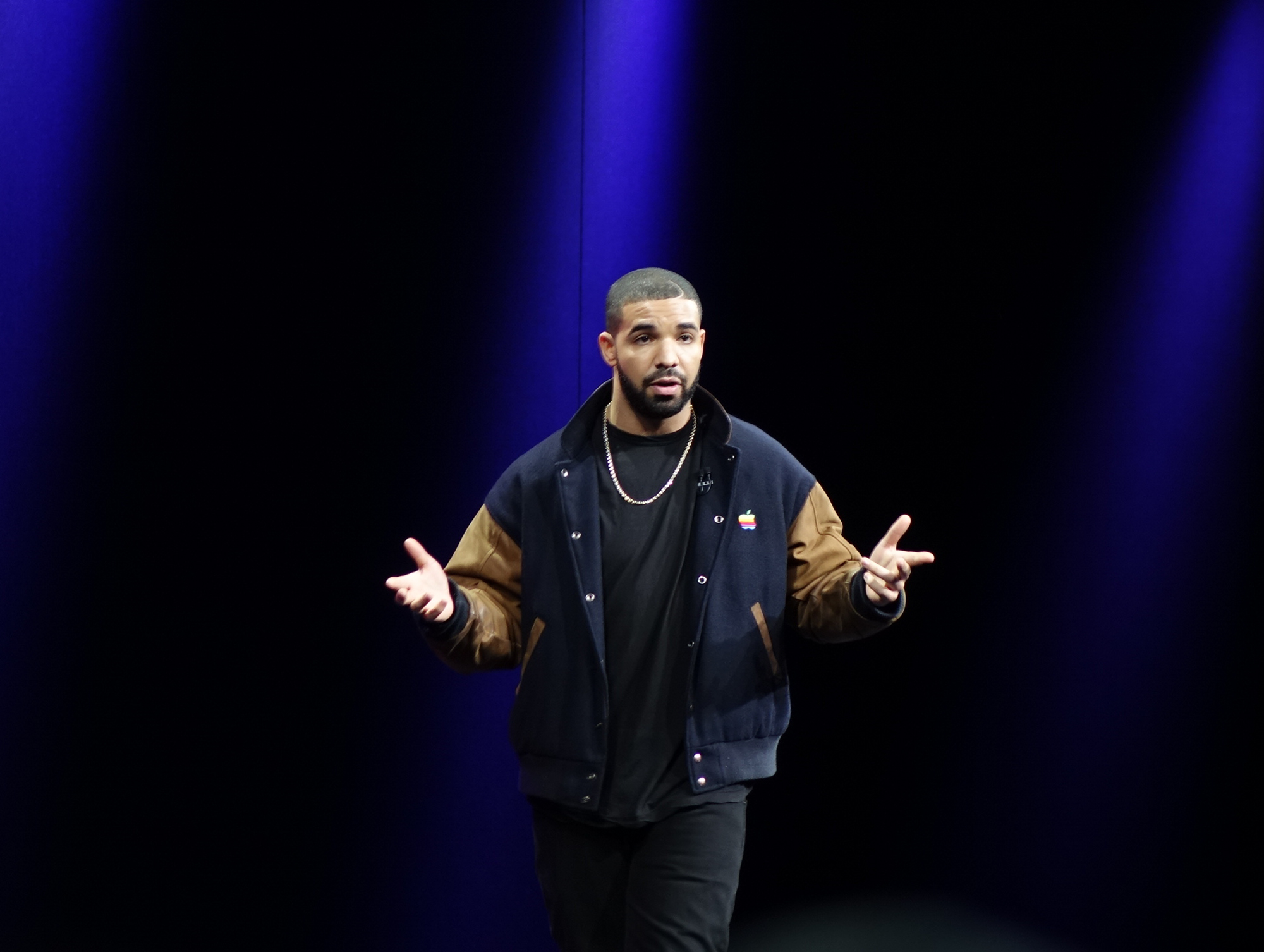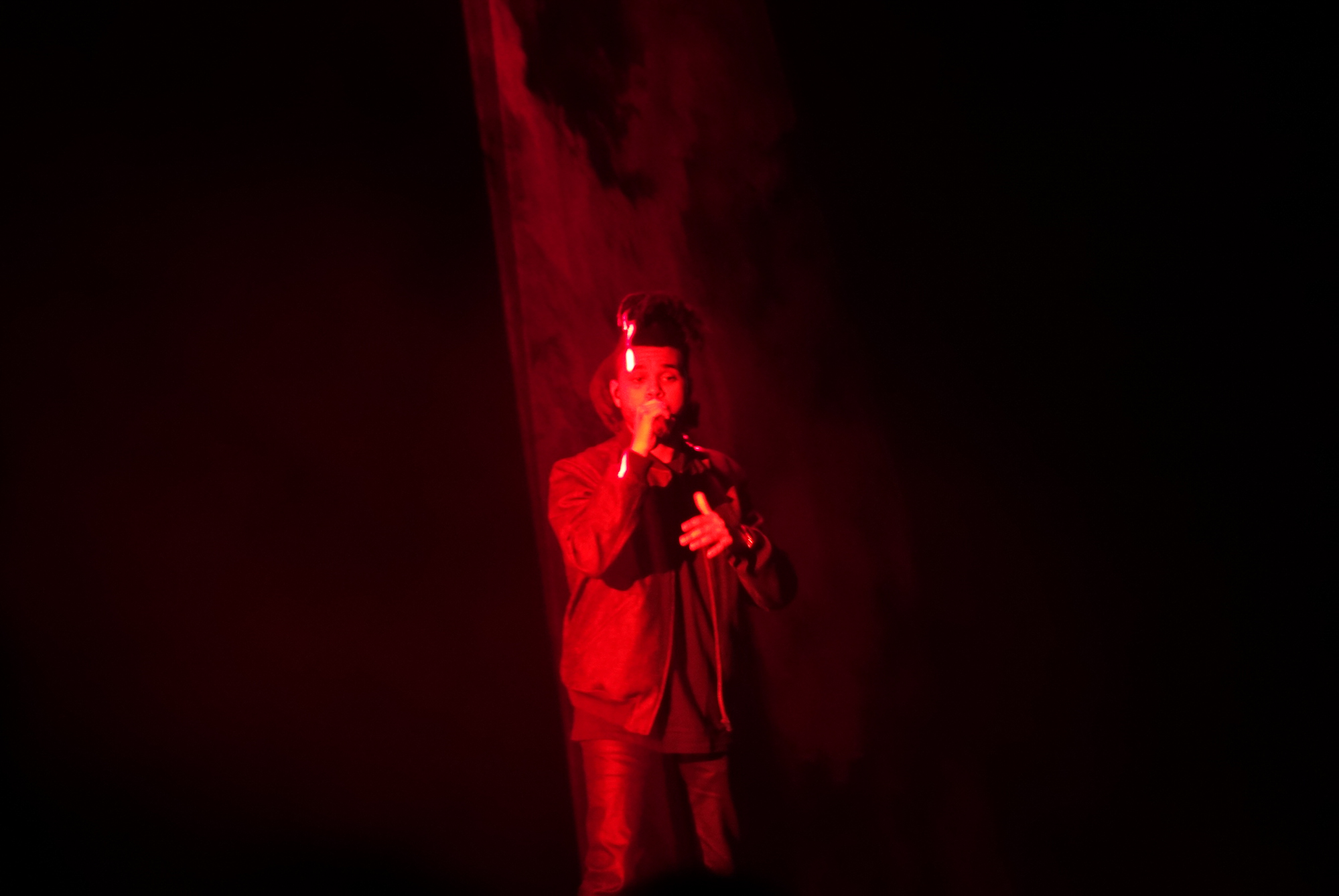
Apple was, as usual, mum about the contents of its two hour-long WWDC keynote as we entered the unusually sparse Moscone Center on Monday morning. The streams of attendees filing neatly up the winding, perpendicular escalators, the cheering Apple employees, the air conditioned hallways – all we had to work with were the massive decals offering brightly-coloured logos for iOS, OS X and, new this year, watchOS.
The keynote itself began with one of Apple’s least cloying videos to date, a humorous, self-deprecating take on the App Store’s success, starring Bill Hader and Danny Pudi, among others.
But it wasn’t until nearly 40 minutes in that we got a sense of how much Canada, and Canadian culture, would play a part in the process. Craig Federighi, Apple’s VP of Software Engineering, used the new iOS 9 Intelligence feature to find a recipe for “Authentic Canadian Poutine,” a stereotype that most Canucks are happy to propagate.
Canada is an odd duck for most countries; we’re so much like the U.S. in many ways, but are too small to really matter. We’re also much more heavily regulated and costly to do business with. Many Canadians, myself included, hoped that Jennifer Bailey, the company’s VP of Apple Pay, would highlight Canada as an imminent area of expansion for the mobile payment service, but instead it was the United Kingdom that got the nod.
It’s important to look past the careful orchestration of the keynote, however, and realize that Apple only announces products and expansions when they’re absolutely ready; it was noted by many journalists that Apple had planned to feature new Apple TV hardware alongside a developer SDK at WWDC this year, but its inclusion was canned just a month before the presentation. Considering Apple spends upwards of six to eight months on the material for each of its three annual keynotes, that can only be considered a last-minute cull.
Looking at it that way, it’s entirely possible that Apple Pay for Canada was intended to be a part of the theme, but was held up by domestic financial institutions lobbying for a smaller hit to their credit card interchange fees. Either way, Apple Pay will come to Canada this year; it’s just a matter of waiting for the right moment to announce it.

Another snub to Canada was News, which is only launching in the U.S., the U.K., and Australia (!) with iOS 9. While the latter country has fewer people, it was likely a matter of getting local media outlets on board with the plan in time for September, when the new software is expected to be released to the public. Unlike Apple’s previous music endeavours, there’s no reason to suppose News will remain siloed to just three countries, but when it comes to negotiations with media outlets, Apple is not entirely in control of the process.

And that brings us to Apple Music, which, though Apple is staying quiet on the exact launch date and pricing, will likely come to Canada on June 30th alongside the U.S. and over 90 other countries. Apple brought Drake to the stage to (rather obtusely) talk about the beauty of music, of collaboration, and probably something about love (I tuned him out after a few minutes). The company that launched a million legal MP3s used a more modern artist than U2 to promote its new Connect social network, but Drake, while publicly drawn to Canada, is a product of the global Internet. (Drake briefly mentioned Toronto, which launched a bunch of hollers from some attendees.)
Whether Apple Music can dethrone Spotify, which only came to Canada in September 2014, remains to be seen, but there’s no doubt that the world’s biggest company intends to win. With a three-month free trial for every compatible iPhone, iPad and iPod, and a fairly interesting hybrid take on live radio with Beats 1, Apple Music may offer the most comprehensive – and, for large families, inexpensive – streaming music solution currently available. Even Android users can’t complain, though they’ll have to wait until the fall for their turn.

The final piece of the love letter to Canada came when at the end of the keynote, when The Weeknd came on stage to debut his amazing new single, Can’t Feel My Face. Much of what Apple has done with music in recent years has felt decidedly behind the times, and as much as iTunes helped the industry get out of its rut, iTunes Match, Radio and, well, iTunes in general, has not curried much favour with the general populace.
Apple may be the biggest purveyor of digital music in the world, and will likely become the biggest provider of paid streaming music, but it has a lot of work to do in building trust with its melody-loving music base. Spotify, Rdio, Deezer and Tidal are more nimble and focused on building great services; as much as music is a part of Apple’s culture, it is still using this product as a funnel to sell more hardware. The reality is that Apple Music may objectively be a better product than Spotify or Rdio, but it has a long slog ahead nonetheless.
After leaving the press conference, I ruminated on Apple’s relationship to Canada. We’re a small market of early adopters and high-ARPU power users that love iPhones and Android phones about equally. Over the last few years, we’ve consistently been a launch market for every piece of Apple hardware, but those pieces of hardware are often hampered by lack of support for the company’s new services. Apple Pay is just one example of a service that is tantalizingly close to launching here, but it won’t be the last time we wait. And wait.
MobileSyrup may earn a commission from purchases made via our links, which helps fund the journalism we provide free on our website. These links do not influence our editorial content. Support us here.


